India – stepwells from the dream
The first part of the article is about underground construction history in India. Weather conditions and social traditions formed special water supplying system making its architectural form unique. The cultural and religious features turned the stepwells into the world heritage architectural sights.
Context
Stepwell Chand Baori – Abhaneri, Rajasthan
It is one of the deepest stepwells in India
Stepwell Rani ki vav – Patan, Gujarat
The stepwell was built by the Queen Udayamati, King Bhima widow, commemorating the memory of her husband
Stepwell Rudabai vav – Adalaj, Gujarat
It is a five-story underground complex in vicinity of Ahmedabad
Other stepwells
There are thousands of stepwells in India and their fate differs from state to state, from village to village
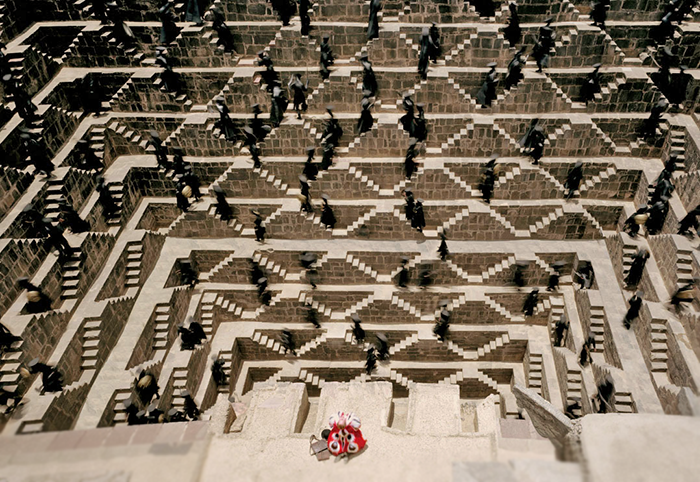
The Fall (2006) movie still, director Tarsem Singh
Repeated steps
Chand baori stepwell is one of the deepest stepwells in India. It is well-known thanks to the movie made by Tarsem Singh, the director of Indian origin, who chose it as one of the movie’s locations. The place resembles Escher’s lithographs and it looks so otherworldly that many cinemagoers thought it being digital graphic.
However, this is just another Indian reality, a bit sprayed with the digital modern methods to match the glamourous beauty of the movie. And the repeated geometric pattern has perfect practical reasoning behind its creations.
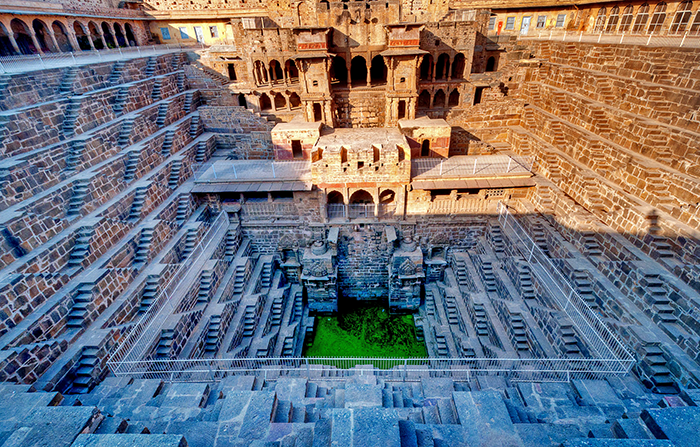
Chand baori stepwell in the Abhaneri village, Rajasthan state, India
The stepwells, also known as baudi, baori or baoli – depending on the province, in the Gujarat state are called “vav”. These are the unique architectural structures, which are found only in India. The stairs build up into the well’s walls has the same repeated fragments of steps, allowing access to the water no matter the level. Monsoon Indian climate is not as gentle as some tourists may think, especially back then, when there was no modern water supplying system. Such a design made the water equally accessible through high waters and dry season.
Besides its actual function, the stepwells also acted as the places for religious celebrations and as places for social meetings. The water has a sacred meaning in Indian religious practices, so the stepwell usually were constructed as parts of the larger temple complexes. Chand baori stepwell was built sometime in the IX century by the order of Kind Chanda. The stepwell has all together about 3,500 steps distributed at 13 levels, 20 m deep.
Queen’s stepwell
Rani-ki-vav (The stepwell of the Queen) in Patan, Gujarat state. The depth of the complex is 24 m, the width and lengths – 20 m and 64 m. Legend has it, that the stepwell was built by the Queen Udayamati, King Bhima widow, commemorating the memory of her husband.
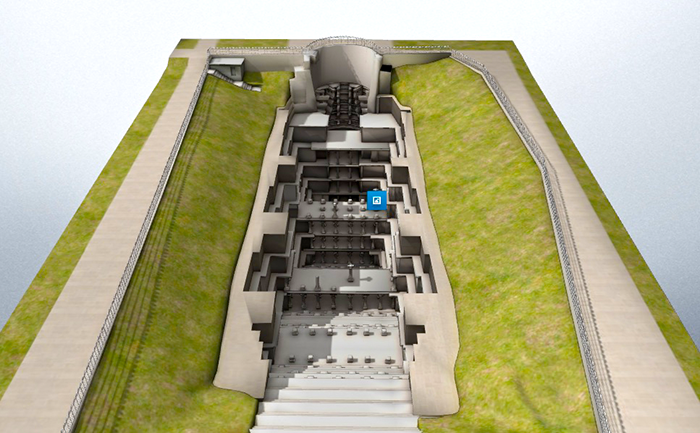
3D image of the well Rani-Ki-Vav to carry out the restoration work, the company CyArk & The Smithsonian. Source: blog.punchcad.com
Some time passed after its completion and it was flooded by the river Saraswati. The temple galleries were stuffed with silt, paradoxically, preserving them for us instead of demolishing. The complex was cleared only in the XX century. The place was included into the UNESCO World Heritage List in 2014. Rani-ki-vav was designed as a turned upside-down temple with 7 levels at different depths. The structures aligned from the West to the East. It includes besides the galleries several spaces for religious ceremonies.The deepest level is the 4th one and it leads to the tank 9.5m long 9.4 m wide at the depth of 23 m.
The temple decorated with more than 500 sculptures and about 1000 smaller sculptures and bas-reliefs depicting heroes of the myths and gods.The well itself is situated in the western part of the complex and has the depth of 30 m. It is 10 m in diameter. The wall was fractured in some places and it made visible, that it was built of bricks and then faced with stones. The vertical bearings support richly decorated galleries of carved stone. Also the complex has the small passage at the base level, leading to the 30 km long tunnel. It provided the escape route to the neighbor settlement Sidhpur. Now it is blocked by mud and stones.
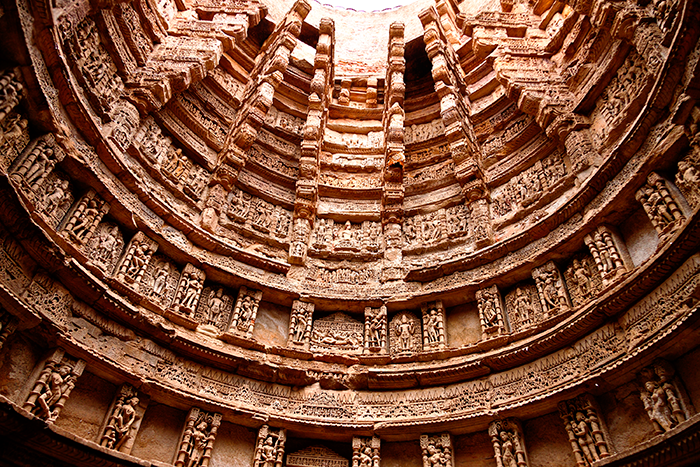
Rani-ki-vav. Source: sahapedia.org
The well mixing two cultures in its look
The Adalaj stepwell or Rudabai-vav is a five-story underground complex in vicinity of Ahmedabad, Gujarat. It is peculiar for its interesting architecture melting together traditional Indian and Muslim architectural elements.
According to the legend, the construction of this well is in close connection with the tragic story of Rani, wife of the ruler of the land, Rana Veer Singh. They lived there in end of the XV beginning of the XVI centuries. The area was called Dandai Desh then.
In 1499 Rana started construction of the temple, but right after Dandai Desh was conquered by Muslim ruler Mohammed Begda from the neighborhood lands. Begda killed Singh and intended to marry his widow, infatuated. Rani made the finishing of the temple construction in the memory of her husband the essential condition of marriage. When the well was constructed and the temple was ready she jumped in it and took her life.
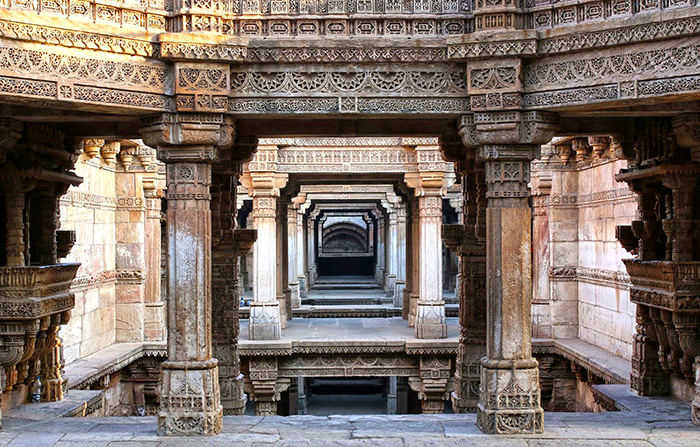
Rudabai-vav, Adalaj, Gudjarat
Octangular structure of the well has 5 underground levels joined by three staircases. Each level admits spatial galleries, the deepest has access to the water through steps. The architecture of the well is Indian in its form: vertical columns jointed by thick slabs angled accordingly, as it is in many similar buildings. Islamic architecture added intricate context by carvings, blending sophisticated Islamic design with the traditional Indian ornaments.
Other stepwells
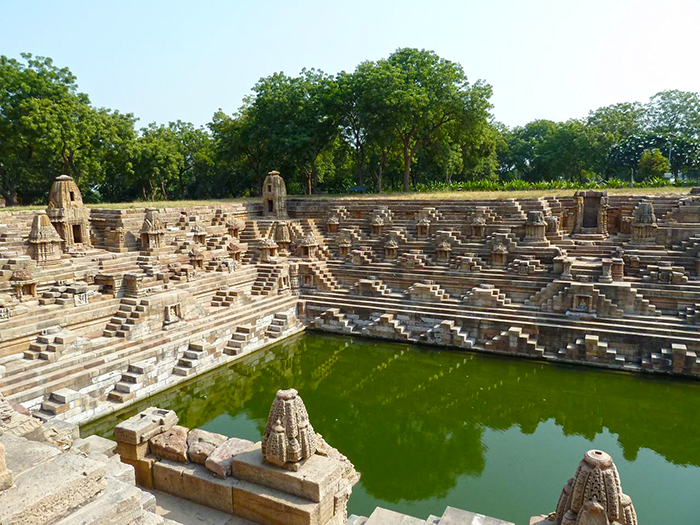
The sun temple of Modera – Surya Kund, Gujarat. Source: bg.blogspot.com
Victoria Lautman, the journalist from Chicago, shot for her photo project more than 120 stepwells. In her CNN project interview she mentioned stepwells she had found literally in the middle of nowhere. The villages ceased to exist, but underground structures made of stone are too hard to disappear in centuries of oblivion.
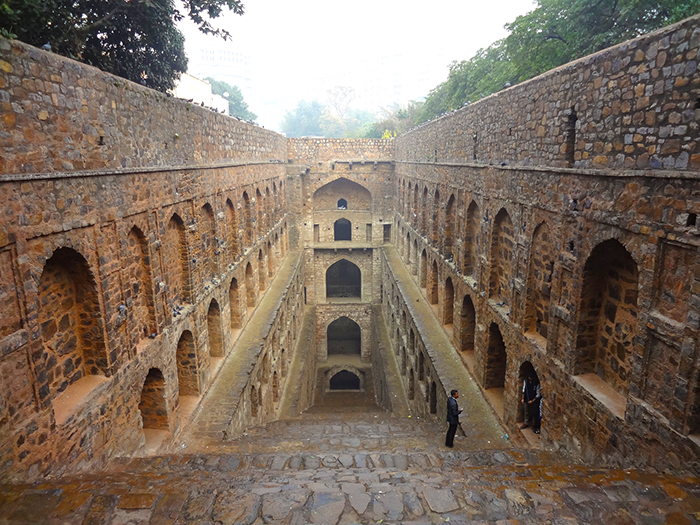
Agrasen-Ki-Baoli in New Delhi, Credit: Victoria S. Lautman
Indian stepwells lost its functions during the British Raj. The water in the wells was used for different purposes and it was not safe from the point of sanitary norms.The British Government routinely stopped their use, constructing the water supply lines along. One by one the stepwells became neglected. Nowadays, if possible, local children use them for swimming or very religious adults make the sacred ablutions. Usually the water is protected with barriers for safety measures.
Additional articles
Select an article of interest:
Mongolia designs new railway “Bohdan”
March 1, 2022
The construction of largest hydraulic tunnel has begun in Qatar
February 28, 2022
JSC "VO "Mashinoimport" supplied escalators for the Novosibirsk metro
December 22, 2021
Russian city Samara plans to build a metro
December 17, 2021
Tell us about our article to your friends,
sharing a link in a social network


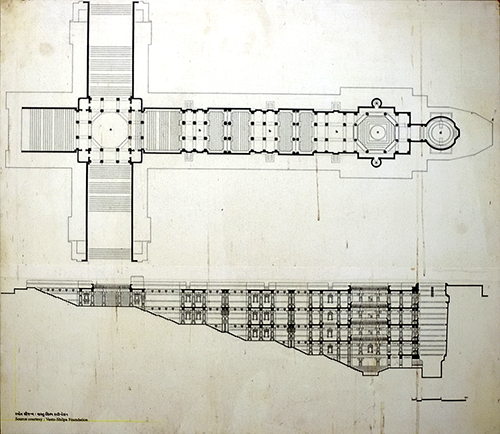













Comments (0)
I hereby confirm that I am familiar with the privacy policy of
and agree to the processing of personal data. Read more